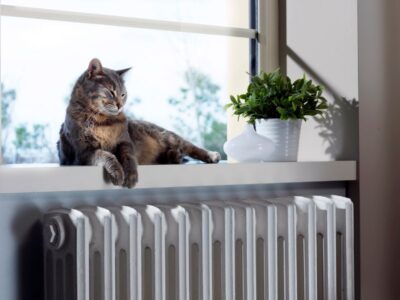We’re lucky to have many days with mild temperatures here along the Gulf Coast, but we also have to endure our share of hot, muggy summers and cold winters. Fortunately, ceiling fans can be used in all kinds of weather — both to maximize cooling on hot days and to enhance the warmth provided by your furnace in winter. Selecting the correct ceiling fan direction for heating or cooling will keep your family more comfortable and can lower your utility bills.
Ceiling Fans for Cooling
A ceiling fan doesn’t actually lower the temperature of the air in a room; it takes advantage of the wind chill effect to make the room feel cooler. As air moves across moist skin, it speeds up evaporation, which absorbs heat from the skin to produce a cooling effect.
Look for a switch on the side of your fan’s rotor housing that lets you select the fan’s direction. Modern models may also have a fan direction switch on the remote control. The correct ceiling fan direction for cooling is counterclockwise. This makes the tilted fan blades sweep air from near the ceiling down into the room. The air high in the room is hotter than the air lower down, but the air’s motion will make it feel cooler to the room’s occupants.
Ceiling Fans to Enhance Heating
On cold days, ceiling fans keep the warm air near the ceiling mixed with the cooler air near the floor. The correct ceiling fan direction for winter operation is clockwise, so the blades sweep air up from the middle of the room and blow it outward to fall down along the walls back to the floor. People sitting in furniture around the room’s perimeter will feel the warm air coming down from the ceiling.
Learn more about ceiling fan direction, as well as Air Specialty’s cooling solutions, or give us a call at (251) 415-4559.





License # 84408